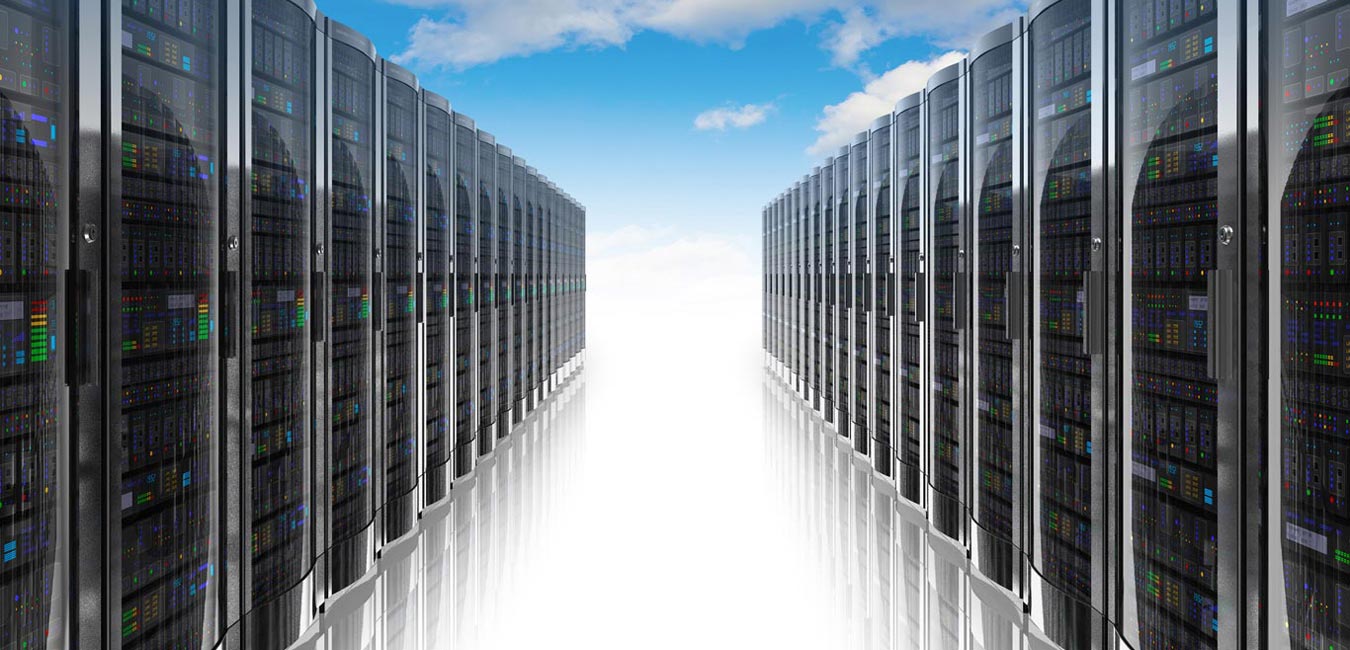Cognitive Computing Turning IT Operators into IT Innovators
Cognitive Computing: Turning IT Operators into IT Innovators
We are on the cusp of a new age of computing. One where smart businesses are starting to think differently about how they design, build, and deliver technology solutions. We believe that IT teams need rise up and help drive this innovation.
That’s why we’re collaborating to help our clients apply the power of cognitive insights to transform their businesses. This starts with a perception shift.
Technology as the Job Maker, Not the Job Taker
So much of what you hear about technology today puts technology in the position of job taker. Conversations about which jobs computers and robots will make obsolete pop up frequently in conversations about the future of tech, business, and the economy.
We have advocated version of that view ourselves: Consolidate your servers and reduce the manpower needed to maintain your technology, outsource aspects of your technology as PaaS, SaaS, Iaas, cloud based, and so forth. This kind of efficiency is part of the story. BUT, we’ve worked hard to relay the second half of this story loudly (but maybe not always clearly).
Yes, this takes away tasks from your IT team, BUT it frees them up to focus on more mission-critical IT work.
IT teams have looked at these kinds of statements skeptically. What would their function be if it weren’t maintaining IT operations?
The Cognitive Computing Era
Welcome to the cognitive computing era, where that vision of IT experts focusing on mission-critical tasks is more of a reality than ever. In the cognitive era, technology no longer just supports the business. It BECOMES the business. Your IT infrastructure is the foundation of this, but IT professionals must do more than just keep the machines running. They must embrace the role of business innovator.
According to IDC, line-of-business leaders say that they perceive IT leaders as business innovators more than business operators. Yet, that same study found that IT leaders viewed themselves more as operators. It’s time for that to change.
The I in IT
Business leaders are recognizing that IT needs to be more tightly integrated into the overall business strategy. In order for this to happen, IT needs to be enabled and viewed as more than infrastructure architects.
IT needs to embrace the idea that they can use technology to drive the business forward. They need to throw off the idea that the I in IT just stands for Information. They need to come forward and proclaim that it stands for Ideas, Imagination, Invention—and that the core of all of that is Innovation.
Priming Your Business for the Cognitive Computing Era
In the cognitive computing era, data analytics has been cut from hours to milliseconds. Organizations have the ability to take action on data in real time. Machines are learning in the cognitive era. They’re learning how to help run businesses more efficiently.
None of this is possible without the right IT infrastructure. Today’s machines can understand, reason, and learn. Traditional IT environments work, but to take the leap into the cognitive, you need more.
We believe the core of this is through enhanced capabilities. In the coming weeks, we’ll dive deeper into the following capabilities:
- Analytics Acceleration
- Data Centric Design
- Innovate with Open Technologies
- Choice for Optimization
- Lock Down while Opening Up
- Controlled Iteration at Scale
When these capabilities are wrapped in the core principals of Design for Cognitive Business, Build with Collaborative Innovation, and Deliver through Cloud Platform, business can start to map out a path where IT is innovative.
Subscribe to our blog and hear us out. We’re ready to make the case for an IT team that is more than just the architects of the machines. They’re the architects of a new kind of business.
Smarter use of collaborative tools and tips for choosing the right ones
Collaborative tools have taken enterprise by storm, not only because of their innovative nature, but also because of the convenience they offer for the critical processes- client communication and data dissemination. Technology plays a huge part, but collaboration, by nature goes beyond that. Here is some ways on which your collaboration tools go beyond mere technological innovations. And these are the ways that collaboration can be used for giving that edge to the business.
Enables easier discussions and planning
With a collaborative platform that is free of geographical limits, remote working of teams has become a reality. This is a definitive edge, because while it may upset work life balance, certainly it supports teams to get together to share ideas, strategies and information that will create them. Getting the right people together, irrespective of the location, is what drives an efficient operation. In a medium sized organisation, this ability could be the game changer. Online collaboration tools also present the opportunity to create the virtual incubator, and this helps to get everyone on a single platform against boundaries of companies, colleges or even vendors.
Equipped with a file sharing and commenting system, audio as well as video collaboration allows employees and teams to work together real time. It will also save costs of travel, maybe real estate too. Having a clear task board is one of the things online collaboration tools can help you with. This helps to create and share a focussed goal, get roadmaps for everyone to follow and finally, ensure the project and strategy tracking is on the same board- pun intended. With good collaboration tools in place, there are jobs done far more efficiently from participants from across the world, than being in the same room.
The nature of the very basic of idea sharing – brainstorming- also can be changed with collaborative networking that has innovative techniques and tools to share information, ideas, and even record them.
They help shape best working practices
When teams work without spatial and communication inhibitions, it becomes easier to discuss the best practices, and far easier to adopt them. The company’s objectives are much clearer, since everything is out THERE, clear and open for discussion. Time delays, trust issues and inability to move forward- all are created because of lack of free and real time communication. Collaboration helps to eliminate that!
Much more efficient resources management
Resources and skilled ones, specially, are a big cost for every enterprise. As the enterprise goes up the value chain, the resources will reduce and there will be an increasing need to do much more with much less. With collaboration, this is supported well. These tools help cut down on redundant and unnecessary communications, high cost means of communication like couriers, or even travel. There is much more that can be achieved with a small, faster, agile collaborative team, and that is the benefit of these tools. Any issues that crop up can also be quickly flagged, resolved and eliminated. Clear conversations that can be tagged from any location, and the ability for the management to follow them- add untold value to the process of strategising- and can be the building block of a very smart company.
Upping employee engagement and morale
Some industry leaders see the engagement advantage as the biggest reason why collaborative tools need to be adopted. This is a modern management outlook, where top-down form of running a company often backfires. Any leader who does not take inputs from employees, but prefers to fire instructions, is more likely to lose people and respect.
Collaboration tools put everyone on the same platform, affording equal visibility to everyone; ideas, making employees feel important, and critical to the company. Nothing makes them more efficient and interested than this realization – that they matter. The manager driven vision of issuing instructions is terribly detrimental to a company’s growth, an increasingly people are realising that. Besides, there is the little matter of most young employees being better clued into the social market than the manager level ones. Getting their interest and commitment could be the smartest decision by way of resources management…and collaborative tools could be the best conduit for that.
Knowledge Management benefits
The same collaboration that helps sharing ideas and forming the most well informed strategies, will also enable collaborations for the knowledge repository within the organisation. Normally, most enterprises have a KM database, that no one really manages or knows about, hence very little utilisation happens. Data that is kept in some obscure corner of the server may be valuable but its real worth only issues when it is utilised for the company’s benefit. With collaborative tools, it can be used by teams globally or at least enterprise wide, to create the best strategies, driving the company’s growth. This pooling of data, information and insights could be the catalyst that your enterprise needs to get on the fast track!
Tips for Choosing the Right Collaboration Tool for Your organisation
Today any organisation needs effective and efficient Communication among their employees. We call this capability as collaboration tool which is in the form of software and hardware. This collaboration tool has many capabilities i.e. from simple instant messaging, to video or audio conferencing. Some applications may focus on a specific element while others try to incorporate more than one capability.
This application software designed to help people involved in a common task to achieve goals. A collaborative working environment supports people in their individual with collaborative work environment thus evolving into a new class of professionals, e-professionals, who can work together irrespective of their geographical location with many tools stich together. we define Online Collaboration Software as a software application, platform or tool that is delivered as Software-as-a-Service (SaaS), or cloud, or on premises having number of capabilities within one platform, either built directly in, or integrated with other applications.
Online collaboration is a valuable tool for any business that wants to be more efficient and effective and isn’t just for companies who had multiple offices located in different geographical locations alone.
Let’s discuss some capabilities of collaboration which is being expected by any organisation.
Some groups want their work done through Group Messaging. We should always look for Integrated messaging features. Collaboration on work doesn’t always mean two or more people are working simultaneously. At time some document which needs to be reviewed by other team members. This is when messaging can be helpful in moving the process on. Users who are viewing the files should be able to leave the message in the file/document. There should also be an option to share the message privately /personally or with a group. Support of Instant messaging IM should also be integrated in the online collaborative tool OR should be part of collaborative conference tool. Sending IM is efficient way to communicate.
There are many ways of doing online conferencing like WebEx, GoToMeeting, Spontania, video, skype, google hangouts etc. and if you are working on any collaboration tool then you should need to supplement your online collaboration software with one of these services. Also we need to see the number of participants in a single conference, normally many solutions are having 25 participants but again depends on the available bandwidth also. We should also see whether the same conference can work as video and audio both? How many continuous presences are available? Public & private chatting is available? Also we should check if connecting the tool with any hardware H.323/SIP video conferencing codecs is possible or not FROM LAPTOP and vice versa? Normally it needs some Gate way software licenses or hardware to connect H.323 /SIP Codecs. All these collaborative tools should also have capabilities for features like application sharing, desktop sharing, white boarding annotation etc.
Then one of the demands are whether you can record the conference on the host pc or on cloud?
Also we are talking about BYOD i.e. bring your own device be it iOS, android smart phones etc. should have the apps available to join the collaboration services from these smart devices as well.
Finally these collaborative tools appeal to the young
One thing for sure that the young generation, group of young people won’t stay unless they’re happy with the tools they’re provided. Email isn’t enough anymore: they expect to communicate much more naturally, just as they do with their friends.
Fail to adapt to this change and you’ll quickly be left behind. If your business isn’t open to collaborative software with latest communication techniques that suit your employees, you might find it hard to find talented employees to fill the gaps in your workforce.
5 Reasons why SMBs must seek out cloud solutions
Reasons why SMBs must seek out cloud solutions
Big is not necessarily better – and small businesses now are aware of just that. Small businesses are r now ready to take on any big competitor, thanks to technology and variety available in the market these days. Not just that, small enterprises can also provide competitive prices and high levels of customer satisfaction.
Growing comfort with the cloud concept encourages small businesses to move beyond hosted general applications and email service to more critical platforms. SMBs are also considering cloud-based solutions as a prime investment area.
Few reasons why SMBs must seek cloud solutions are:
- Flexibility and Scalability: Cloud based solutions are extremely flexible and adjustments to the system can be made quickly without the need of a major re-architecture of the Data Center; and hence prove the right choice for SMBs. One does not need to bother in case of a shifting of office/ headquarters or even the Data Center.
- Geographic benefits: Cloud solutions offer a unique opportunity of having geographically unnecessary online copies of each backup. This is especially useful should a calamity hit an entire region. Additionally data backed up in one region can easily be restored in another region on any side of the globe.
- Speed: In addition to performing updates in a much more timely manner, making the switch to cloud also allows an organization to work much more efficiently. For instance, in case of SMBs and startups, when one can’t afford IT staff, trying to perform updates oneself can end up being time-consuming; putting it in the hands of others means that time can be put to better use.
- Low maintenance: While conventional storage solutions require significant amount of architecture and technical work to setup and operate on a day-to-day basis, cloud technologies offer complete solutions that may not require in-house IT resources to maintain. Additionally cloud managed services provider can provide experts to monitor and maintain backups for your entire organization from a central location.
- Cost Effective: One would need to consider the cost of the hardware needed to backup data, software licenses, storage cost, electricity and cooling system cost, the cost of an offsite storage facility, a DR site in another location, and the cost of qualified technical persons to manage the backup and recovery and testing process. After analyzing all the costs, the low monthly fee of cloud based solutions quickly becomes attractive.
Human errors is now the top threat for information security in organizations
A chain is only as strong as its weakest link. In an enterprise environment, it is often human errors that create the biggest risks. This fact is corroborated by many studies, and more than those, by many outages and episodes. Whether it is ignorance or wilful data theft, the risk that enterprises face from employees and disgruntled ex-employees is as big as (if not bigger than) external cyber threats or APTs. While ignorance has only one reprieve- training and policy enforcement, deliberate thefts can be more difficult to handle, and will need tools as well as stronger security infrastructure tools in place.
In January 2015, P&G USA filed a suit against 4 Gillette employees, for stealing and sharing corporate information with direct competitors. This is a classic case of people risks with sensitive corporate information. In another recent report on a study by Ponemon Institute, employee negligence was identified as the top threat for information security in healthcare organisations. How do CISOs identify a high risk behaviour employee? Also, how do IT organisations fight ignorance and negligence in employees to secure data, to the maximum possible lengths?
Here are some ideas on how to do it…
1. Identify careless employees, increase risk awareness- Tighten up Policies
Simple carelessness on the part of an employee-like forgetting to close a portal when not using it, using weak passwords, allowing unauthorised access to information and the most common- forgetting a mobile in a cab- can cost a company millions in terms of revenue. It can also turn back years of hard work for a market reputation or creation of strategy.
The only solution is constant training and creation of awareness about the risk careless behaviour can carry. Making compliance stronger and more strictly enforceable could help here. Creating clear policies of what is mandatory, at any cost, also helps. Once clear cut guidelines are in place, screening is easier and even re-screening isn’t such a cumbersome task any more.
All access levels need to be defined, especially for business critical systems and data. Strong encryption tools need to be in place, and authentication needs to be a non-compromiseable exercise. Unwanted devices, sites and applications usage needs to be regulated as well. Constant training needs to be in place for cyber security awareness, so employee understand the impact of even a single wrong click that opens a malware laden site. Opening unauthenticated sites, sharing passwords, carrying sensitive information in an unencrypted form- everything needs to be regulated, and the employees made aware of the risk- over and over again!
2. Mobility Led Risks- The rights tools in place
While enterprise mobility cannot be avoided in almost all enterprises, it is one of the highest reasons of data theft and loss. Studies indicate that almost 68% of all global organisations have faced a security threat from employee owned mobile devices.
Every enterprise needs to have tools in place to prevent this risk from blowing into a full outage. Again, a clearly defined BYOD policy is a critical part of this plan. Monitoring personal owned devices, encrypting data before access, are some processes that should be strictly enforced. Security solutions for isolating corporate data and encrypting it are available, and should be used.
3. Disgruntled employees- screening and rescreening would help
While employee background screening is almost mandatory for every organisation, sometime it is just not enough. In many cases, crucial facts about an employee can be missed. In addition, a dissatisfied or frustrated employee is also a threat- and specially one who knows it will be easy to walk away without anyone identifying him or her as the cause of a breach. They will have the satisfaction of causing harm to the company!
For this kind of attitude, a single screening while hiring may not be enough- follow up screenings and re-screening is required. Companies that do not insist on rescreening at regular intervals, expose themselves to threats of all kinds. Having a regular follow up on every employee’s background is an exercise that could probably detect a malignant element in the people strength of the company, which could be the fore-alarm, needed to step up security or deal with it right away.
4. Train and Update- Constantly
There are innovations in tools as well as applications for IT security, as with other technologies, on a rapidly growing basis. Every single threat is another step up for data on risk, and every time this should be documented and shared.
Every enterprise should keep abreast of these innovations, and ensure all employees are trained on a constant basis. By maintaining an updated list of risky behaviour, and the circumstances that lead to a breach, a training manual can be created. Employees need to be regularly trained for what to be cautious about and how to handle a threat. Clearly articulating the ground rules and elaborating on the consequences of the situation will certainly create a culture of security awareness in any enterprise.
Summary
While constantly evolving security technologies are creating updated tools to fight IT security, the single wrong action of an employee can undo the best of guards and checks. Every enterprise needs updated information on these tools, and needs to ensure every employee knows how to NOT be a risk. The education, training and awareness about risky behaviour are essential.
Also essential is the policy to make this awareness mandatory, these rules completely enforceable and the training a part of the corporate culture. While technology and tools can provide the ammunition to prevent breaches, the human element needs enterprise focus as well!
Enterprise Policy Vs Technology – are your people the biggest security risk?
According to a study by Intel in September 2015, almost 43 % of all data breaches were due to insider breaches (half being intentional). Threats perpetuated by disgruntled employees form an overwhelming number in these, especially in the Asia pacific region, where it is the second largest cause of all security breaches.
But despite such staggering figures, very few organisations or IT employees take the insider threat seriously- as low as 20% in the US market. A recent report by Ponemon says that in 2015, while insider attacks weren’t the biggest cause of security breaches, they caused the most damage- about USD 144,000 per instance!
Why?
Globally, very few organisations seem to have a clearly written policy that ensures employee education or affirmation about maintaining security of organisation data. If nothing else, it would help in increasing awareness of what might be dangerous, and lay down the processes for the right way of handling sensitive data!
One of the things this policy needs to define is regulate the privileges that trusted operators have- because they most often have the opportunity to cause most damage. Since they have the privilege to perform any process on critical systems using critical data, they could also, inadvertently or deliberately, be the biggest threat!
Most organisations confuse trust with granting unauthorised access to data for any employee and that has cost many companies dear! A balance between empowering an employee, and access control needs to be in place. In a vast majority of cases the unauthorised access comes from inadvertent sharing or passwords or access to critical data. What’s needed is a strict control on access. But that’s where the challenge lies- overlapping roles and inconsistent entitlements. But even more than that, is the poor governance process that keeps the backdoors open for security policy enforcement. The reason is, very often, that most organisations themselves are unaware of where their critical information is stored. It then becomes difficult to prevent inappropriate transmittal or access in the first place! And in most cases, a company’s reaction to a breach is reactive. There is hardly any attempt for predictive responses. There is almost never any system or policy in place to identify at risk accesses or individuals, so an attack may be pre-emptive or predicted.
Any policy that is to regulate data access to insider threats needs to follow some definitive guidelines. Some permissions and capabilities of employees need to be clearly regulated. These could be:
Data Classification
In order to be able to protect critical data, it first needs to be classified as critical. Understanding the consequences of a leak, an organisation needs to classify information at various levels of criticality and then work on ensuring the various security policies that confirm to each level of protection it needs. The data could include customer data, financial or market data or systems information. Each of these will have a cost attached, and access policies need to be in place for all. In addition, the security algorithms need to be clear on who can access to what levels- read, delete, copy or use in any other manner.
Privileged Identity and Passwords Management policy- a Must
In most organisations, the security and IT admin teams have access to almost all data, but with passwords. In some orgs, leadership and stakeholders are also given access. Such privileges need to be monitored by technology tools as well as policy enforcements. Who gets to see and do what, or Privileged Identity Management, has to be clear and simple but non-compromisable. It should enable regulation of multiple accesses to critical data.
Often many leadership level stakeholders share passwords and authorisations that could compromise key data or systems of a company. A policy that lays down the terms of clear privileged Identity Management can control the risks associated with this multiple usage of passwords and thus, the risk.
RBAC
In most organisations, privileges accesses are all or nothing accesses, often allowing more privileges than a person needs. A regulatory policy should be able to change that, and reduce the unnecessary risk to key data and systems information. Policies governing user entitlements need to be a strict enforcement in every organisation.
Fraudulent Access Identification
In cases where an outsider exploits an insider to access data, the advanced authentication methods should be put in use. These would go beyond passwords, and into the contextual factors. Fraudulent access can be identified by simple ways- time zones- a person logging in from another place within minutes of logging from one- or some security questions answered wrongly- anything could trigger alarm bells and even identify a fraud authentication try. But these also need to be a part of the policy process.
Virtualisation Risks – Need of Security
With innovative technologies like virtualisation, the risks of insider leaks have increased- another layer of administrators for the hypervisor. With the ability of the tool to replicate or transmit data at a single click- the risks have gone up manifold. The solution usually is to embed traditional security apps in the hypervisor layer as well, but the entire virtual infrastructure too, needs to be secured. The security policy needs to have an option for emerging technologies and the risk they pose.
Summary
So, to control the problem of unauthorised access, there needs to be a strict security paradigm with automated processes that meet compliance audits and identity security policies. What’s critical here is the tighter incidence management timelines- that deliver a timely and stronger role based security foundation.
Data Centers 2.0 – What to Expect and What to Plan For
With enterprise rapidly becoming virtual – by way of the cloud and connecting with IoT, physical servers for Data Centers are on their way out. Whatever the storage capabilities, it is just not going to work for the enterprise of today, and definitely not for tomorrow. What then is the face of Data Centers 2.0?
The cloud has all but taken over the storage scenario if Gartner’s figures are to be believed. In fact, in India, the revenue from cloud services has been projected at 33.2% between 2012 and 2017. So essentially, the cloud expenditure will grow at a higher rate than IT budgets in most organisations. Given this reality, and coupled with the rapid adoption and growth of virtualisation as an enterprise technology, the future of Data Centers is going to be vastly different from its present avatar.
Businesses are demanding a change. Virtualization is the enabling technology for a whole new wave of IT innovation. In addition to the technological prerogative, virtualisation is a technology that will drive efficiency and speed in enterprise in more ways than one, the primary one being business advantage. There will be soon no reason why any company would entertain the monolithic hardware based Data Centers that grab higher slice of the IT budget pie in just keeping it efficient and well managed.
The most obvious way the change will happen is the transformation from everything hardware to everything on a software platform. Beyond storage, even the Data Center networks! So SDDC is the way forward, definitely. According to a study by MarketsandMarkets, the market for Software Defined Data Centers will be growing at a rate of 28.8% every year between 2015 and 2020, from USD 21.78 billion in 2015, touching USD 78 Billion in 2020. With the irresistible benefits of reduced IT infra cost that the automation provides, and the resultant efficiency of market response, SDDC is definitely the hero of the still evolving Data Center industry.
With software enabled systems, a multi layered control is the next easy step. A centralised Data Center management console is now a reality and this also allows the analytics and big data processes to get more space, visibility and hence, strategic leverage. These layers can control almost everything – from users, space, virtual machines and even manage policies. With higher visibility into every single aspect of the data that can be drawn, and more efficient process control, this will certainly be a part of the Data Center of the near future.
With software essentially taking over Data Centers, they will be completely infrastructure agnostic very soon. There will be very little consideration of which hypervisor, servers or platform is being used, since the layered management tools will make it so easy for administrators to scale and work on powerful platforms, in a much more fluid and seamless fashion. The Data Center of tomorrow will take ease of management to hitherto unknown levels. In the same flow, Data Center automation will ensure better workflow management and optimal efficiency management as well. Robotics will almost certainly be utilised to a greater extent in efficiently managing Data Centers of tomorrow. Many known brands are already developing smaller robots that will help in identifying the energy patterns and their efficacy in Data Centers, and this will only get better over the next few years as Robotics becomes a more enterprise oriented technology.
However, just acquiring a Software Defined Data Center may not be the end of enterprise planning; there are certain things to watch out for, while taking up this innovative plan. Firstly, SDDC is not an enterprise reality yet, and only those organisations that have a certain maturity levels in terms of I&O engineering, are best off installing it.
Secondly, and more importantly, adoption of a software defined Data Center should come from a business need for higher agility and scalability. The underlying technology and skill requirements will not be viable if this is a purely technology initiative. In any case, this is not an off the shelf product and any enterprise planning to install has to do its own due diligence. A SDDC initiative would need that the organizations identify a suitable vendor to do the job, and do it well. Then, there are discussions around the various components of the Data Center – which may not all come from the same vendor- hence the issue of integration and seamless interoperability will arise.
Till it becomes commonplace technology, the stakeholders need to work on various commercial aspects of the transaction – software lock- in will be a big issue for this particular decision, and could play a very strategic role in the financial planning.
All said, the SDDC will replace your Data Center eventually, over the next two to three years, but it may not be the smartest choice for every enterprise right away. However, enterprises need to be prepared for the change when it comes- because then it will be too late to start preparedness and planning.
How Data Centers Can be Big Savers for Enterprise
Growth is about getting the right solution along with the right support at the right point in your revenue plan. The journey to higher growth needs to be supported by cost efficiencies and a well designed, well supported Data Center with fastest response times could be your biggest ally in this journey!
Over the next three years, all mobile data will double, and all forms of global IT traffic will quadruple. Your servers and even your cloud will not be able to keep pace with the data deluge that is on its way! What then, is your solution to meet this new business paradigm halfway… and still grow?
In a study conducted by Ponemon Institute in 2013, a one minute Data Center downtime can cost an enterprise up to $7,900. This was a 41% increase from 2010 costs, and if we maintain the same growth rate, 2016 will post huge downtime losses!
As your enterprise grows, it will bring forth the need for increased storage, sometimes also the imperative of virtualizing it. While this is a cost, an optimised and well integrated Data Center can actually be your best answer. It can smoothen the operations, increasing productivity and hence profitability, helping minimize TCO and maximize ROI for the enterprise. It also offers a seamless change in technology adoption to aid new processes and better business processing. This is your best path to improving agility, resilience, security and also meet compliance standards.
So, faster growth projections will need Data Centers that allow storage and computing power with much better and faster performance, much lower downtime and at much lesser cooling costs (while inflicting lower damage to the environment). There can be no compromise on storage technologies, since an unscheduled down time in a Data Center can translate into big losses. Ensuring minimal or zero down time means higher growth and profits!
A study by IDC says 2017 will see 8.6 million Data Centers globally, and the burden of maintaining these in fighting condition will fall on your Data Center services provider. So the choice has to be a wise one.
In order that costs and uptime can both be contained intelligently, there are some ways to plan on the Data Center build, virtualization and networking.
The golden rule – Monitor constantly – whether it is the energy consumption, the equipment and servers or the security threats- keep a constant watch on the Data Center. There is efficient software available that ensures a smooth functioning and setup, use it.
The Data Center is not merely a cluster of well oiled servers, upgraded to a virtualised bunch of servers on the cloud (perhaps). While most companies see it is an investment, from a bottom-line perspective, its real value manifests only when it is viewed more strategically. Disruptive innovations and game changing Data Center technologies like virtualization, convergence and cloud mobility can impact the business strategy and drive growth as well as profits. The agility and faster delivery of data and other business operations that these technologies ensure, provides IT a strategic weapon to push business growth. CIOs need to just change their view of Data Center investments-from dead CAPEX to dynamic OPEX.
Globally, companies have leveraged their Data Centers to grow their business by upgrading, unifying and virtualizing them. Adding to their speed to market, these companies have managed to launch newer and better products faster, thus capturing a bigger share of the market. The ability to expand customer base, leverage analytics and generate strategic insights from the data critically adds to the growth paradigm. Making money, here, is about increasing top lines and crunching timelines.
Ultimately the fast paced response of an efficient Data Center ensures agility that provides the best way of increasing the jingle on the till. A well organised, upgraded and well maintained Data Center is thus foundation for this sweet sound of money rolling in.
Investing a stringent IT budget in upgrades of Data Center or Transforming them may just be the smartest decision a CIO will take today. With business scenarios never being more competitive, this could be the best chance at market differentiation, business transformation and hence, growth in revenues and market shares.
3 Ways You Can Save Costs on Networking Decisions!
The efficiency of your organisation today depends on the ability to allow employees to access information anywhere, anytime and from any device in real time. It wouldn’t be wrong to say that a stable, robust and agile network infrastructure base is the strongest foundation to achieve scale for enterprise with strong business model.
Today, information is power and business dynamics demands availability of information round the clock. CXOs and IT managers today simply cannot escape the burden of cost optimisation, and technology is a major cost. IT expenditures are driven by ROI and IT leaders find the walk on the edge of utility vs costs, a sharp blade to negotiate on. Efficiency (cost and operational) then usually becomes the deciding factor in the networking technology strategy.
With the right technologies and platform in place, it may even be possible to tilt the balance on the side of cost optimisation, without compromising on efficiency or security.
Here are 3 ways smart networking can help you save costs …
1. Deploy an intelligent network with automation capabilities
It’s a big investment, so ask the relevant questions and make prudent choices. You need a network platform that not only provides basic connectivity but also the base for next generation applications that allow innovative add-ons. Investments in a network deployment that can be automated, has intuitive abilities and can be relied upon to be secure and agile – ensure maximum RoI. While analysing the TCO of a network platform, also consider the costs of support, energy, and product life. Ensuring these do not become ambiguous issues later on, helps to save costs upfront. Then, it’s time to look into the actual business benefits. These could cover the absence of (or minimal) downtime, productivity enhancement such as network uptime, user productivity, and security. These, is handled judiciously, will ensure optimal costs savings.
While selecting a networking technology, make sure it assures:
- Adaptive network architecture – To accommodate new emerging applications as demand persists.
- Open, Scalable and software driven architecture to meet the need of today & future.
- Reduced power consumption – By device itself to operate and cooling requirement.
- Visibility through management platform to reduce man-hour spent during critical time.
2. Minimise complexity of vendor management
Smart Moves for a more cost effective network infrastructure:
- Understand – there is a paradigm shift globally, in networking infrastructure technologies and usage – the world is looking at Green network branches- so plan for virtualised, converged networks that are completely SLA driven and easier to manage
- A scalable and simpler network architecture could simplify your operations considerably AND save costs
- A SOA could help improve user experience
Opting for a single vendor network infrastructure has its advantages, the biggest one being cost optimisation it offers! A single line service, a singular helpdesk and a single point of contact for support, should be your objective. While juggling various products to get a network infrastructure in place may initially look like it saves some of your budget, in the long run, that will not be the case.
A composite vendor environment demands a skilled manager, and that is in itself a cost. Allowing a single vendor to take care of your end to end network integration saves that cost, as well as squarely places the onus of zero downtime on the vendor. This means resources and complexity saved at your end, leaving your skilled resources to attend to more significant operations – like the growth of your business!
3. Monitor your network
Network monitoring is every bit as critical as the network itself. In fact, not monitoring the network is the single biggest mistake enterprises make, which makes them vulnerable to all sorts of risks- security, downtime and even excessive energy usage- all definitive extra and huge costs. Enterprises ignorant of what links are down and what points are vulnerable, are completely exposed to all sorts of risks. Real time analysis and monitoring of the network is a must to detect any anomalies. Each of the network applications should be trained to identify anything amiss- by way of predictive and pre-emptive analysis.
Of course, the biggest beneficiary of real time network monitoring will be security assessment. Given that security breach could also trigger the biggest losses, the investment in a monitoring app is certainly worth every bit. Of course, the key here is proactive monitoring and immediate action on an anomaly, without waiting for it to mushroom into a threat.
However, monitoring need not be a huge and excessive expenditure. The whole operation of purchasing, maintaining and integrating costly paraphernalia for network monitoring will defeat the purpose. So, for optimal monitoring at minimum costs, it may be smart if the network team develops the base requirement for visibility and troubleshooting during the instances of upgrades or new installation of networks. This will prevent downtime, and yet ensure constant monitoring tools are up and running- saving incident costs.
There has been tremendous innovation in networking technologies, including software defined networking (SDN), network function virtualization (NFV), overlay networks, open API’s, cloud management, orchestration, analytics and more. These innovations have great promise to improve operational efficiency and enable digital applications. However, the real life challenge of adopting new technologies has resulted in a slow adoption of these innovations.
What the CIOs need to do is draw an architecture that integrates the critical innovations in networking (that includes these technologies) in their roadmap for new features. This will not only help to improve process and productivity within the organisation but also reduce operational cost to manage infrastructure and ensure that it is adaptable to meet demands of new applications roll out.
Ensure Lower Opex with Data Center Monitoring
Data Centers are the backbone of today’s IT world. Growing business, demand that the Data Centers operate at maximum efficiency. However, building Data Centers, maintaining and running them involves a lot of operational expenses for the company. It is important for companies to look for options that can help them lower Opex for their Data Centers. Proper capacity Planning, advanced monitoring techniques, and predictive analysis can help companies to achieve these goals and help improve business growth. Real-time monitoring helps Data Center operators to improve agility and efficiency of their Data Centers and achieve high performance at a lower cost.
Today’s digital world requires constant connectivity, which in turn requires all time availability. But there could be several things that could cause outages – like overloaded circuit chip, air conditioner unit malfunction, overheating of unmonitored servers, failure of UPS (uninterrupted power supply) and power surge. So how do we ensure availability? Implementing DCIM (Data Center Infrastructure Management) technologies can help you improve reliability. DCIM systems monitor power and environmental conditions within the Data Center. It helps in building and maintaining databases, facilitate capacity planning and assist with change management. Real-time monitoring helps improve availability and lower Opex.
Servers and electronic devices installed in Data Centers generate a lot of heat. Overheated devices are more likely to fail. Hence, Data Centers are usually kept at temperatures similar to refrigerators. Thus most of the power in a Data Center is consumed for cooling purpose. There are various techniques and technologies that Data Center operators can implement to save energy. Recent strategies like free cooling and chiller-free Data Centers, expand the allowable temperature and humidity ranges for Data Center device operations. Implementing these strategies help save energy costs. A telecommunication giant Century Link had an electricity bill of over $80 million in 2011 which made them think of a solution to lower this cost. CenturyLink implemented a monitoring program. With this monitoring program, their engineers were able to safely raise the supply air temperatures without compromising availability and with this solution CenturyLink was able to save $2.9 million annually.
As per ASHRAE (American Society of Heating, Refrigeration and Air Conditioning Engineers) new guidelines, the strategies like free cooling and chiller-free Data Centers can offer substantial savings and one might expect Data Center operators would make use of these seemingly straight forward adjustments. However, as per a survey, many Data Center operators are not yet following these techniques and average server supply air temperature for the Data Center is far cooler than ASHRAE recommendations.
Most of the Data Centers are provisioned for peak loads that may occur only a few times in a year. Server utilization in most of the Data Centers is only 12-18% or may peak at 20%. However, these servers are plugged in 24x7x365. In summary, though the servers are idle they are drawing the same amount of power that other operational servers are drawing. Power distribution and backup equipment implemented in Data Centers also cause substantial energy waste. Similar to cooling strategies, most of the owners employ alternate strategies to improve power efficiency. However, most of them are on the computer side. Increasing density of the IT load per rack, with the help of server consolidation and virtualization, can offer substantial savings, not only in equipment but also in electricity and space. This is an important consideration when a Data Center is located in constrained energy supply or electricity situation in the context of high real estate prices, as in most of the urban areas.
Increasing density leads to concentrated thermal output and needs modified power requirements. The effective way to maintain continuous availability in high-density deployments is real-time monitoring and granular control of the physical infrastructure. Power proportional computing or matching power supply to compute demand is the recent innovation that few of the operators are using to improve energy efficiency. Few operators use dynamic provisioning technologies or power capping features already installed on their servers. However, raising inlet air temperatures causes the risk of equipment failure. Without an in-depth understanding of the relationship between compute demand and power dynamics, implementing power capping increases the risk of the required processing capacity not being available when required. Without real-time monitoring and management, there is a high risk of equipment failure in a Data Center.
Real-time monitoring helps businesses get critical information to manage possible risks in the Data Center. Monitoring helps improve efficiency and decrease costs, enabling businesses to have availability and saving. They can lower Opex and still maintain high availability.
With the help of Real-time monitoring, a small issue can be spotted, before it becomes a large problem. In a smart Data Center, several thousands of sensors across the facility collect the information regarding air pressure, humidity, temperature, power usage, utilization, fan speed and much more – all in real time. All this information is then aggregated, normalized and reported in a specified format to operators. This allows operators to understand and adjust controls in response to the conditions – to avoid failures and maintain availability.
Monitoring has lot many benefits. Monitoring data can be used by cloud and hosting providers to document their compliance with the service level agreements. Monitoring data allows operators to automate and optimize control of physical infrastructure. Real-time monitoring gives visibility at a macro and micro level, for businesses to improve client confidence, increase Data Center availability, energy efficiency, productivity and at the same time reduce their operational expenditures by optimizing Data Centers with the help of monitoring data.
Embracing the Software-defined Data Center
With the Data Centers becoming more crucial to meeting the business requirements of organizations, older technologies are lagging behind. That’s why the savvy business professionals are embracing the software-defined Data Centers that extend the advantages of automation and orchestration, simplify management and provide a more business-focused approach.
Take baby steps
Designing software-defined environments often implicates re-evaluating business processes and operations model, ranging from automation and orchestration to service activation and user experience. It is often suggested that companies have to transform the whole Data Center operations, which seems daunting but in fact, is not necessary at all. You can simply begin your journey in the SDDC environment with small steps by starting projects that are associated with low-key services that address only one aspect – networking, computing or storage. If you start small with projects that are not mission-critical, your IT gets an opportunity to adapt and filter processes for the next project, hence shaping SDDC expertise without exposure to any business risk.
Skilled IT team is vital
In SDDC, it is imperative that the IT team has the capability of comprehending the automation and orchestration of systems. The technologies in a software-defined Data Center are generally vendor specific. It is crucial for businesses to choose platforms that can be conveniently and skillfully managed by the IT team. It is always better to consider in-house expertise rather than modifying the team for unfamiliar technology and spending a fortune on training and support.
Consider the IT role
In the age of software-defined Data Centers, businesses don’t run IT processes in silos, as they used to earlier. Since the data is coordinated at a higher level, there is no longer a need for separate groups for networking, storage, applications and servers. SDDC offers more applicable information gathered from various components and distributes it across IT for better operations and management. Server uptime, storage efficiency and security are significant. So are the prompt IT systems upgrade and completion of task to the user’s satisfaction. In the new scenario, the role of IT will shift dramatically. IT will have to optimize and deliver services as per SDDC standards on a virtualized infrastructure.
Use metrics for the business
Agility is the top-of-the-line driver for IT and in an SDDC infrastructure, businesses can notably crop down the time to deploy, upgrade and even fine-tune a user service. Metrics are critically valuable. In an SDDC-oriented environment, businesses are able to increase the speed of diagnosing issues. This enables them to adapt quickly to real-time demand, simply by measuring request and response times between servers and clients. Further, they get the opportunity to move storage resources with zero downtime along with the ability to scale infrastructure sans the user downtime. Ease of use, user satisfaction, moving workloads easily, re-purposing infrastructure for hosting various apps and the total cost are the metrics that can showcase that your business can be more agile and efficient in software-defined Data Center.



































































